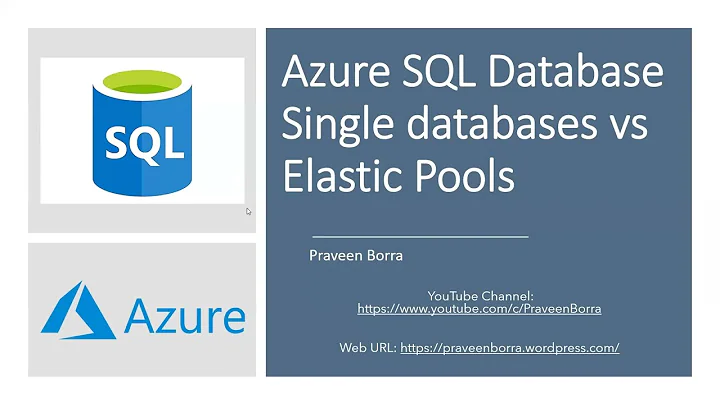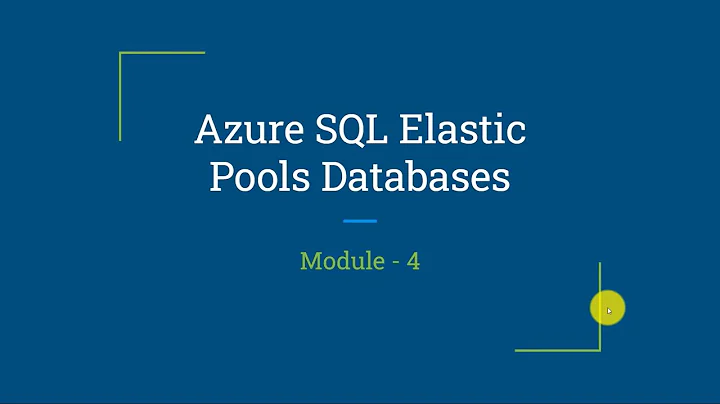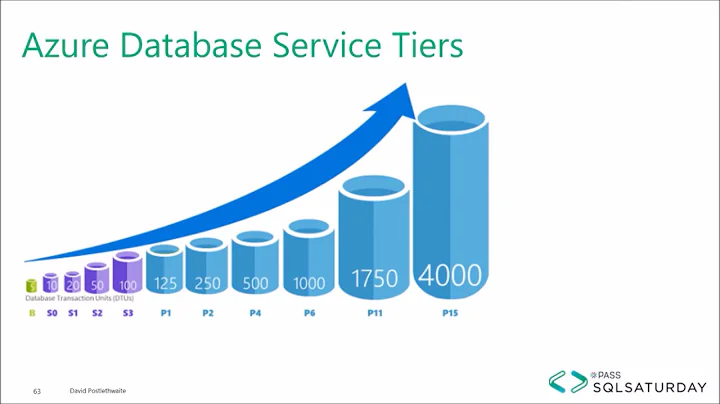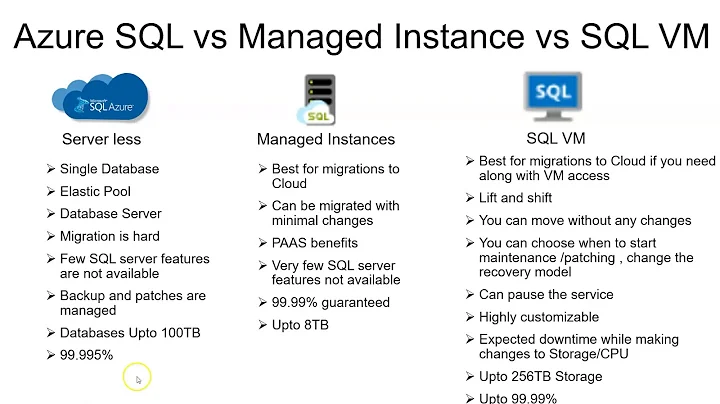What is the difference between Azure SQL Database Elastic Pools and Azure SQL Database Managed Instance?
Azure SQL Database Elastic Pool is a shared resource model for Single Azure SQL PaaS databases to achieve higher resource utilization efficiency, and all the databases within an elastic pool share predefined resources within the same elastic pool. The emphasis of this offering is on a simplified database-scoped programming model for multi-tenant SaaS apps where the workload pattern is well defined and delivers high cost-effectiveness when serving many tenants.
SQL Database Managed Instance offers a simplified instance-scoped programming model that is like an on-premises SQL Server instance. The databases in Managed Instance share the resources allocated to the Managed Instance, and the Managed Instance also represents the management grouping for these databases. The emphasis of this offering is on high compatibility with the programming model of on-premises SQL Server and out-of-box support for the large majority of SQL Server features and accompanying tools/services.
Some high-level guidelines might be:
- Use Elastic pools if you need to group a large number of single database that don't need all instance Transact-SQL functionalities that exist in SQL Server.
- Use Managed Instance if you want to migrate a large number of SQL Server database that heavily use instance level features such as CLR, Service Broker, SQL Agent, etc.
See more info in Azure SQL IaaS vs PaaS Comparison Table
Related videos on Youtube
Jovan MSFT
Updated on June 04, 2022Comments
-
Jovan MSFT almost 2 years
Azure SQL Database has two similar flavors - Managed Instance and Elastic pools. Both flavors enables placing multiple databases that share the same resources and in both cases can be changed cpu/storage for entire group of database within the instance/pool. What is the difference between them?
-
James almost 4 yearsI don't know if this has changed since this answer was provided, but Managed Instances now cost the same as a Single Database of the same size, whereas Elastic Pool adds a premium for the same capacity. With that in mind, why would anyone choose Elastic Pool when Managed Instance is cheaper and has more features. Am I missing something?
-
James almost 4 yearsFrom Microsoft: Elastic Pools support more databases per pool than available on a single Managed Instance. Additionally, there is built-in resource governance in elastic pools to ensure fair resource usage across databases. Finally, each database in a pool is isolated from other databases to support multi-tenant scenarios.
-
Martin Cairney over 3 yearsThe pricing is not exactly like for like - yes, a 4 vCore SQL DB costs the same as a 4 vCore Managed Instance. That is because you are just paying for SQL Server core licenses. However, there is STILL the DTU model which provides a different pricing model and also SQL DB can go as low as 2 vCores in the vCore model whereas a Managed Instance is a minimum of 4 vCPU. Effectively, your mileage may vary depending upon the performance profile of your databases - so evaluate all the options to identify what works best for you.




![Azure SQL DB vs. Managed Instance - Data Engineer (DP-203) [Link to my free course in description]](https://i.ytimg.com/vi/NfS6Kdh_em4/hq720.jpg?sqp=-oaymwEcCNAFEJQDSFXyq4qpAw4IARUAAIhCGAFwAcABBg==&rs=AOn4CLA3DEXGuT1Bp-1G602o7abe3zXK1w)


